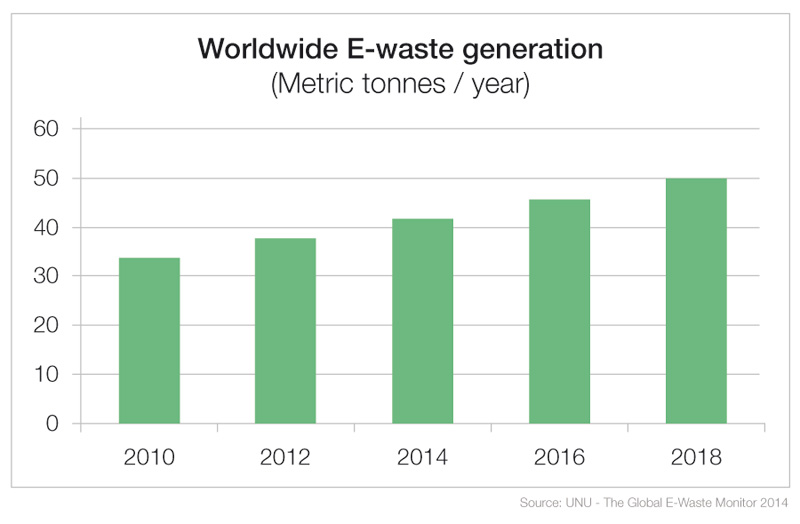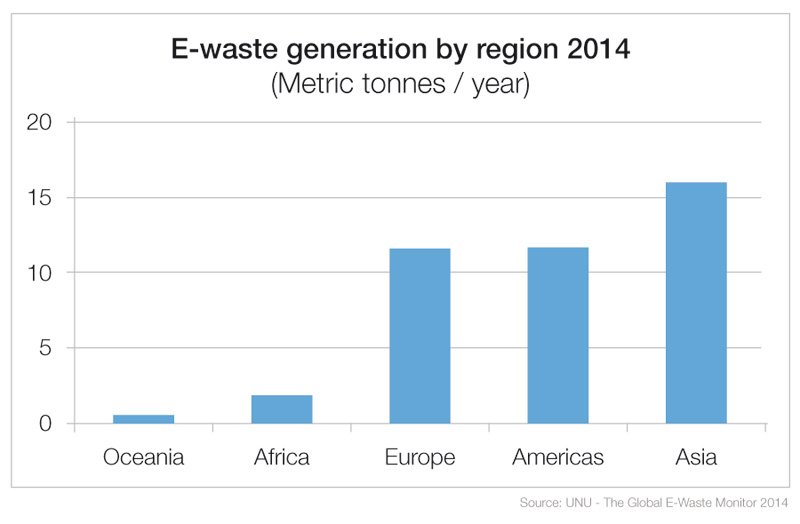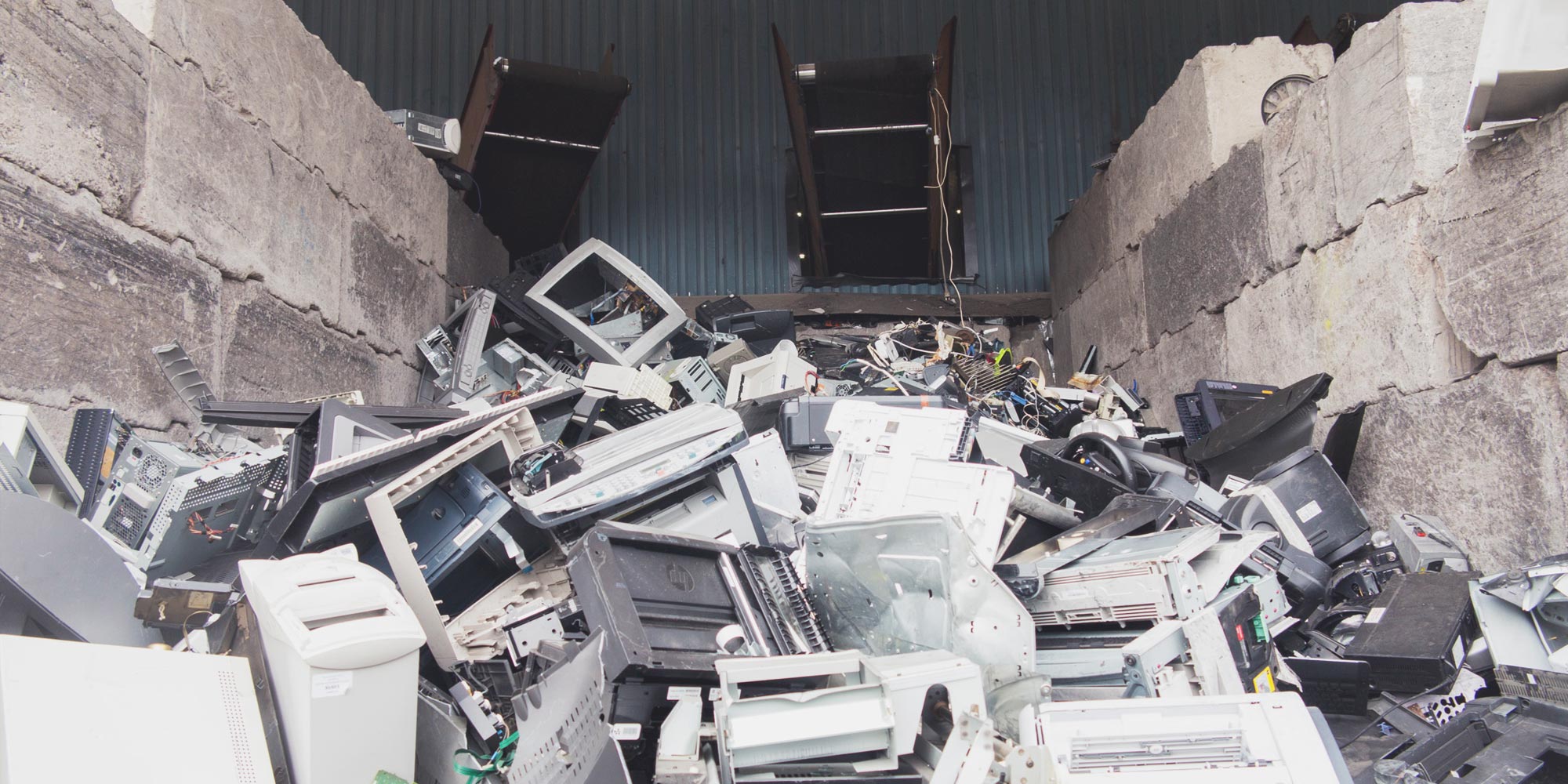An e-waste report from 2015 released by the United Nations University reports that global electronic waste has reached record high levels. 41.8 million metric tons of e-waste was generated in 2014, fuelling concerns about the growing risks to public health, resource conservation and the environment.
With rapidly changing technologies and constant consumer demand for the latest devices, the rise in e-waste looks set to continue. Lowering the amount of electronics entering the waste stream and improving end of life handling are essential for building a more circular economy, where waste is reduced, resources are conserved and are fed back into the supply chain for new products. Buyers also have an important role to play by choosing products that are durable, repairable, less hazardous and are designed for safer recycling.
Until now, definitions of e-waste and methods used to evaluate it have varied between regions and made calculations of total volume difficult. The Global E-Waste Monitor 2014 – Quantities, Flows and Resources, aims to present “the first comprehensive assessment of e-waste volumes, their corresponding impacts and management status on a global scale” (UN report p 8).
Read the full UN report
Learn more about the circular economy
E-waste — a toxic waste stream where valuable finite resources are lost
Fifty million metric tonnes of e-waste is generated every year, equalling the weight of nearly 4,500 Eiffel towers. Much of it is incinerated or placed in landfill, causing pollution, human health hazards and the loss of valuable finite resources.
E-waste – a rapidly escalating problem
Findings in the UNU report point to a clear, steady growth trend in e-waste, which is projected to continue at a rate of two million metric tonnes per year. This would mean almost 50 million metric tonnes by 2018.
Of total e-waste, approximately one quarter – or 9.3 million metric tonnes – is made up of personal digital devices such as computers, displays, smartphones and tablets and TVs. Household appliances as well as heating and cooling equipment account for the remainder.


Europe – most e-waste per-capita
Of the regions included in the analysis, Asia generated the most e-waste in 2014, with 16 million metric tonnes, followed by the Americas at 11.7 and Europe with 11.6 metric tonnes respectively.
Europe generates the most e-waste per capita, at 15.6 kg per inhabitant. Following closely behind is Oceania with 15.2 kg and Americas at 12.2 kg.
For purchasers – preventing e-waste begins with what you buy
For purchasers, helping to prevent e-waste isn’t just an end of life issue. It begins with the IT products you select. The best option is to buy a second-hand product. If you can’t do that, choose a high-performance product. That way, you can keep it for a longer period of time and it will be more attractive on the second hand market. To extend its usable life, make sure that the product you buy is repairable and upgradeable.
Criteria in TCO Certified aimed at reducing e-waste
Criteria in TCO Certified are designed to help address the growing e-waste problem, along with other environmental and social challenges connected to electronics. Those criteria include manufacturer-provided take-back programs, which can move a greater number of products into proper recycling or re-use programs. Criteria for extended product life make it easier for the product to be used longer and delay their entry into the waste stream. Design for recycling criteria and the reduction of hazardous content also can make for easier recycling and lower the health and environmental risks during the recycling process.
The complex composition of electronics demands correct handling and recycling at end of life. Devices such as computers, tablets and smartphones also contain potentially hazardous substances, adding to human health and the environmental risks if not handled correctly.




